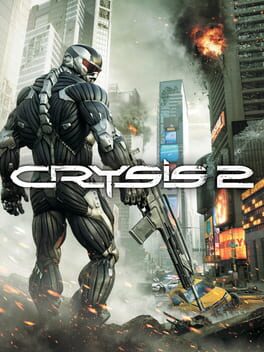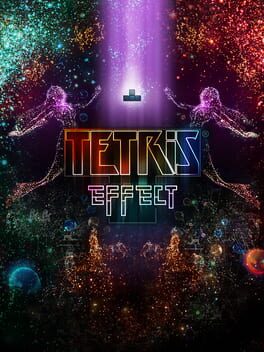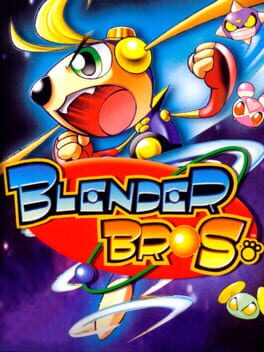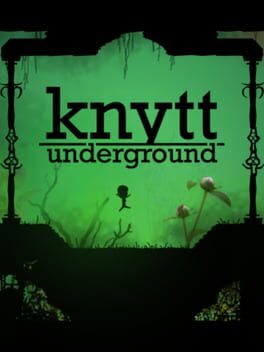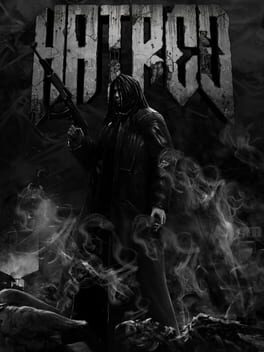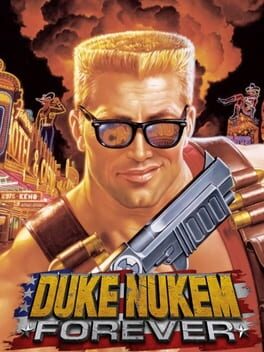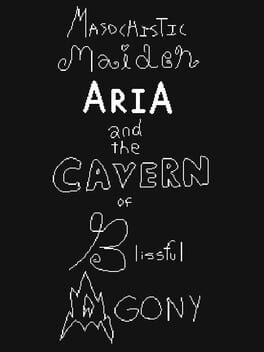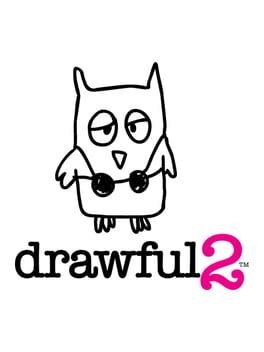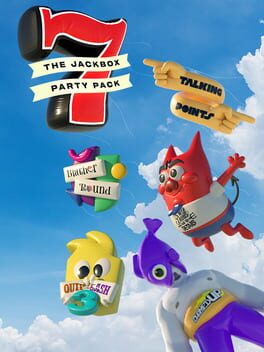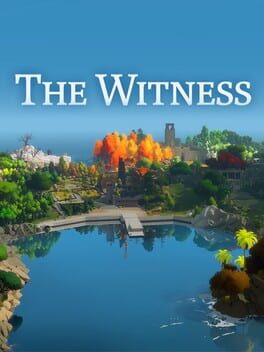2011
It had some high points for sure. I think the close quarters combat was slightly better than the first one. The graphics still hold up incredibly well. Some level layouts were interesting...
But on the whole, this took the open level design of the first one and threw it to the trash in favour of something that more often than not just doesn't click. The nanosuit has been horribly nerfed. The gunplay sometimes does some wild stuff and isn't as reliable as it should. Its visuals are masterfully crafted but don't really leave a lasting impression (even for dreary desaturated PS3/360 gen shooters). The story is completely forgettable. There are a fair share of sections that can be a pain in the dick...
At some point in the last third of the game I just wanted to get it over with and simply stealthed my way to the exit of the last few levels. It's a shame because even with all the step backwards the game does, there were some elements I thought were enjoyable or incredibly ambitious, but you gotta look at the whole picture and ask yourself "Am I gonna remember any of this one month from now?" Probably not.
But on the whole, this took the open level design of the first one and threw it to the trash in favour of something that more often than not just doesn't click. The nanosuit has been horribly nerfed. The gunplay sometimes does some wild stuff and isn't as reliable as it should. Its visuals are masterfully crafted but don't really leave a lasting impression (even for dreary desaturated PS3/360 gen shooters). The story is completely forgettable. There are a fair share of sections that can be a pain in the dick...
At some point in the last third of the game I just wanted to get it over with and simply stealthed my way to the exit of the last few levels. It's a shame because even with all the step backwards the game does, there were some elements I thought were enjoyable or incredibly ambitious, but you gotta look at the whole picture and ask yourself "Am I gonna remember any of this one month from now?" Probably not.
2018
2002
There's nothing particularly remarkable about this game but it's so straightforward, with a good pace, a couple of well placed level gimmicks to add variety and some cool Mini Bros abilities that it's something quite welcoming to play, even if it doesn't leave much of a mark. It's cool innocent fun, and with the cartoony pre-rendered models with black outlines aesthetic and the happy upbeat tunes... it makes me feel like I'm playing someone else's childhood.
2013
2012
2000
It's got so many rough spots (specially the eroge scenes, the only good ones are from Ciel-senpai my beloved) that it should be at most a 7/10. In fact, that's what I thought upon finishing it for the first time, but as time went on, I just couldn't get Tsukihime out of my head. It's so iconic, genre defining, and how the story progresses throughout the different routes is still fascinating as it undergoes a complete genre change. Even if it's a late 90s doujin shut-in otaku escape fantasy and sometimes it's borderline Twilight for weebs, I don't care, I love this.
2015
The Beginner's Guide and Stanley Parable share both a problem and it all resides within their post-modern themes. I think both games showcase a lot of what kind of language and opportunities you could use within games that aren't possible in any other medium but both struggle to apply it to something. They are good art studies, not so much art pieces. They lack substance, there's very little that's tangible about them, so what I'm left with is kinda like the creative outcome of someone that went to art school, knows their shit, but has nothing to say. They have the wits, they have a lot of ideas, but they don't have the creativity to apply it to something, so instead they use the post modern metanarrative umbrella to let those ideas break lose without much of a meaning behind them other than being cool ideas.
But that's only half-true, as The Beginner's Guide tries to give it a tangible pseudo metanarrative by being... guided (heh) through different bit-sized games of a fictional developer by a narrator, who spoon feeds the player the meaning of every artistic resource the game showcases while also telling the story of said developer and their relationship. It's kind of a fake documentary in a way and I enjoyed how the concept was executed... on paper.
I hate the narrator with all my guts.
I hate the fact that the game spoon feeds the meaning of everything going on. I hate that every moment that's genuinely well crafted and made me feel something is quickly destroyed by his annoying voice. And I specially don't like his character.
Unfortunately, that's the game. That's the point. Without this frustrating character, the game wouldn't stand on its own because:
1) It's an interactive essay about language and meaning in videogames, and essays need a voice
2) There would be very little going without the voice, as it delivers necessary context. It would be like visiting a Vang Gogh exposition without context of who is Van Gogh and what he was going through while painting those pieces. In a museum the easiest and best solution is to provide the necessary context through annotations or some info panels and then let the visitant wander and let him take it all in and wonder what it all means if he wants to... but in this case it's all very abstract and barren, so it wouldn't retain most people's attention, and also the devs wanted to give you a very annoying guide because...
3) The game is also about the very annoying guide. So in the end it's also kind of a character study that delves in very exciting themes like: what's the relationship between the art analyst and the art? What's the line between artistic intent and personal interpretation? Does anything have meaning at all or is at all a fragment of the analyst's blablablablablablablablablabla...
I swear to good, this is the kind of game that makes you wanna say very mean stuff about millennials being snowflakes and that they should go and touch grass... and I'm a millennial too, but damn. This game is so far up its own ass about stuff that you get through in your first year of art school, and I'm sorry to say this because this is not only about the fictional developer and the fictional narrator... it might be about the real life author of The Beginner's guide and his complex relationship with art and meaning in videogames? Or maybe the way videogame analysts looked at his work when he made The Stanley Parable? Maybe the real meaning of the game is somewhere between all these layers?
I don't know. I don't care. This whole "roleplaying as someone else and having a monologue about art that's secretly about self-loathing" is frustrating to think about.
It's 2 hours so... if you're very impressionable about art discussion and you like this kind of very pretentious post modernism you might like it more than I did. Just like The Stanley Parable, I respect some of the ideas and its use of resources even if they are in service of what's ultimately a post modern uroboros.
But that's only half-true, as The Beginner's Guide tries to give it a tangible pseudo metanarrative by being... guided (heh) through different bit-sized games of a fictional developer by a narrator, who spoon feeds the player the meaning of every artistic resource the game showcases while also telling the story of said developer and their relationship. It's kind of a fake documentary in a way and I enjoyed how the concept was executed... on paper.
I hate the narrator with all my guts.
I hate the fact that the game spoon feeds the meaning of everything going on. I hate that every moment that's genuinely well crafted and made me feel something is quickly destroyed by his annoying voice. And I specially don't like his character.
Unfortunately, that's the game. That's the point. Without this frustrating character, the game wouldn't stand on its own because:
1) It's an interactive essay about language and meaning in videogames, and essays need a voice
2) There would be very little going without the voice, as it delivers necessary context. It would be like visiting a Vang Gogh exposition without context of who is Van Gogh and what he was going through while painting those pieces. In a museum the easiest and best solution is to provide the necessary context through annotations or some info panels and then let the visitant wander and let him take it all in and wonder what it all means if he wants to... but in this case it's all very abstract and barren, so it wouldn't retain most people's attention, and also the devs wanted to give you a very annoying guide because...
3) The game is also about the very annoying guide. So in the end it's also kind of a character study that delves in very exciting themes like: what's the relationship between the art analyst and the art? What's the line between artistic intent and personal interpretation? Does anything have meaning at all or is at all a fragment of the analyst's blablablablablablablablablabla...
I swear to good, this is the kind of game that makes you wanna say very mean stuff about millennials being snowflakes and that they should go and touch grass... and I'm a millennial too, but damn. This game is so far up its own ass about stuff that you get through in your first year of art school, and I'm sorry to say this because this is not only about the fictional developer and the fictional narrator... it might be about the real life author of The Beginner's guide and his complex relationship with art and meaning in videogames? Or maybe the way videogame analysts looked at his work when he made The Stanley Parable? Maybe the real meaning of the game is somewhere between all these layers?
I don't know. I don't care. This whole "roleplaying as someone else and having a monologue about art that's secretly about self-loathing" is frustrating to think about.
It's 2 hours so... if you're very impressionable about art discussion and you like this kind of very pretentious post modernism you might like it more than I did. Just like The Stanley Parable, I respect some of the ideas and its use of resources even if they are in service of what's ultimately a post modern uroboros.
2016
It might be only two steps above some of those old flash games where you could do very heinous shit with little in terms of purpose, but there's something about how with silly underground comic aesthetics the game portrays a raw violence filled trip through someone's schizophrenic paranoia that just works.
It helps that it's a small game with very little in terms of filler, there's no complicated systems whatsoever, and just does its thing. Some level layouts are a bit of an uphill battle in higher difficulties and they'll make you sweat, but it ain't bad at all.
Shoutout to the title cards for each level for having some of the most dark, twisted and interesting music in gaming. Like, goddamn, the base game would be so much disturbing with those playing in the background.
It helps that it's a small game with very little in terms of filler, there's no complicated systems whatsoever, and just does its thing. Some level layouts are a bit of an uphill battle in higher difficulties and they'll make you sweat, but it ain't bad at all.
Shoutout to the title cards for each level for having some of the most dark, twisted and interesting music in gaming. Like, goddamn, the base game would be so much disturbing with those playing in the background.
2015
2016
2016
